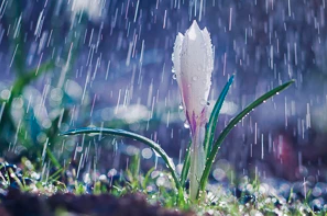Rain Gardens - Inspiring Garden Ideas for all Gardeners
Rain gardens are specially designed garden features that capture, filter, and absorb stormwater runoff from roofs, driveways, or other impervious surfaces. They help reduce the impact of stormwater on local waterways and ecosystems while providing an attractive and functional garden area. Here are some tips for creating and maintaining a successful rain garden:
- Select an appropriate location: Choose a site downhill from impervious surfaces and at least 10 feet away from your home’s foundation to prevent potential water damage. Ensure the site has well-draining soil or amend it as needed.
- Determine size and shape: The size and shape of your rain garden should be proportional to the size of the impervious surface it will capture runoff. A general rule of thumb is to create a garden with a surface area equal to 20-30% of the impervious area.
- Choose suitable plants: Select native plants adapted to local climate and soil conditions and can tolerate both temporary flooding and periods of drought. Examples include astilbes (Astilbe spp.), black-eyed Susans (Rudbeckia spp.), and switchgrass (Panicum virgatum).
- Create a depression: Excavate a shallow depression in the chosen location to help capture and hold stormwater. Incorporate berms or swales as needed to direct water flow and encourage infiltration.
- Plant in layers: Arrange plants in layers, with taller plants in the center, medium-sized plants in the middle, and low-growing or groundcover plants at the edges, to create visual interest and support diverse wildlife.
- Mulch and maintain: Apply a layer of mulch around the plants to help conserve moisture, suppress weeds, and protect plant roots. Perform regular maintenance tasks, such as weeding, pruning, and monitoring for pests and diseases.
- Monitor performance: Observe your rain garden during and after rainfall events to ensure it is functioning as intended. Make adjustments as needed to improve water capture, infiltration, and plant health.
By carefully selecting plants, creating an effective design, and providing ongoing care, you can create a thriving rain garden that not only beautifies your outdoor space but also helps protect local water resources and support a diverse range of plant and animal life.

